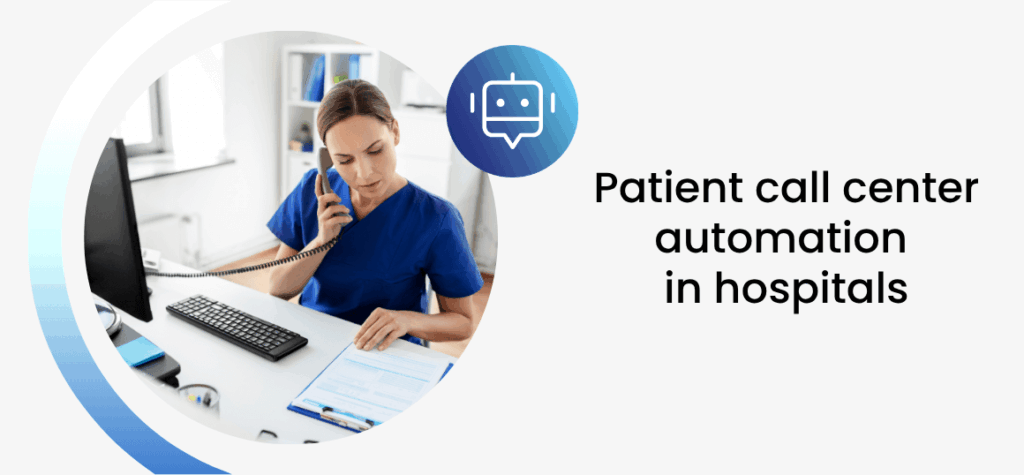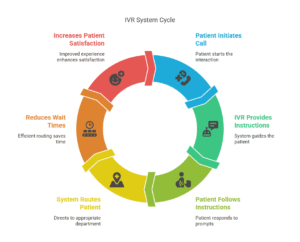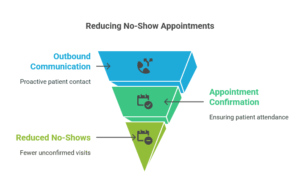Patient call center automation in hospitals

Call center automation in hospitals – a way to save money and improve patient service quality
Running a medical facility in Poland is a highly demanding task. Many institutions struggle with financial difficulties and poor service quality. How can this be improved? One of the ways is to implement automation in the contact center area connecting patients with hospitals. Discover how to reduce costs and enhance the quality of patient service.
Smart tools and systems for call center automation in hospitals – is it worth it?
In private healthcare facilities, the use of AI-powered smart solutions and modern technologies has become standard practice. Public hospitals are increasingly choosing to follow this trend as well. The goal is to improve the efficiency of outpatient clinics and increase patient satisfaction, all while reducing operational costs. Efficient management is the key to success. In the following sections, you’ll learn which solutions are worth implementing and which areas of outpatient clinic or hospital operations can be successfully automated.
Smart call routing with IVR
The IVR (Interactive Voice Response) system has been used in telephone service for years. It enables voice message recordings and routes patients to the appropriate department or specialist. The patient simply follows the instructions provided by a voice-over or speech synthesizer. For instance, during the registration process, the system can direct them to the correct hospital outpatient clinic. This relieves the burden on front desk staff and makes it easier for patients to book appointments or get in touch with a specialist. As a result, it reduces wait times and positively impacts patient satisfaction.
Automation of medical appointment scheduling systems
Using scheduling software for patient registration in clinics or hospitals has also become a standard. This system replaces the need for medical reception staff by using medical voicebots to guide the patient through the entire process. This ensures the procedure is both efficient and effective. Hospital staff can focus on other responsibilities, while booking an appointment at a hospital outpatient clinic requires no direct involvement from them. It’s a simple and secure solution that saves both time and money. A modern system of this kind is integrated with specialists’ calendars, which minimizes the risk of errors. At the same time, it is possible to skillfully and effectively combine the functions of AI tools with the presence of physical reception staff in the clinic. This is crucial, as there is still a significant group of patients who prefer in-person contact and scheduling appointments directly at the facility rather than by phone.
Reducing the no-show phenomenon in hospitals and medical facilities
Call center automation can also involve outbound communication. In practice, this means the hospital proactively contacts the patient to ensure optimal care. This works particularly well for appointment confirmations. A good solution is to set up reminders via SMS or through automated calls made by a voicebot. This helps confirm the patient’s attendance at their scheduled appointment. Ultimately, this leads to a reduction in the number of unconfirmed visits—known as the “no-show” phenomenon. Unfortunately, this remains a major challenge for healthcare facilities, where appointment slots are blocked but patients do not show up. Meanwhile, the hospital could have accommodated other patients in need. Implementing automation in this area of the contact center streamlines the facility’s operations and allows it to increase the efficiency of its services, to the benefit of all patients.
Automated responses to basic inquiries
A hospital call center is not only responsible for scheduling appointments with specialists. It also handles patient inquiries and provides information about the availability of test results. This aspect of running a medical facility can also be automated. Tools such as chatbots and voicebots play a crucial role here. Chatbots handle written communication, while voicebots manage voice interactions. Both can be integrated with the call center system and configured with communication pathways tailored to patients’ needs. As a result, patients can quickly and easily receive answers to their key questions. At the same time, these tools take over routine communication tasks, allowing staff to reclaim valuable time and focus on the most complex issues and areas where personal, direct involvement is necessary.
Tangible savings in patient service
Implementing modern technologies and automating selected areas of patient service delivers measurable results. Of course, it’s not possible to completely eliminate the human factor, but many processes can be streamlined to minimize staff involvement. This leads primarily to significant time and cost savings. In fact, automation often enables workforce reduction or allows medical personnel to be reallocated to tasks directly related to providing care for those in need. In an increasingly competitive healthcare market, every detail matters. If you enhance service quality while optimizing operational costs, your facility becomes more competitive. Without a doubt, this is the right direction to take. A perfect example is the Gizińscy Medical Center—one of the largest private healthcare facilities in the Kuyavian-Pomeranian Voivodeship—which has successfully embraced this approach.
Optimizing patient communication and its impact on service quality and satisfaction
Automation of the hospital contact center should not focus solely on cost efficiency. It must also aim to enhance the overall patient experience. Carefully selected and properly implemented tools primarily lead to:
- reduced call waiting times,
- a simplified appointment scheduling process,
- personalized communication,
- shorter response times to patient inquiries.
In short, patients are served better and faster, which significantly increases their satisfaction. As a result, they are more likely to choose private medical care, even if it involves additional costs. This type of automation also proves effective in public healthcare facilities, which face the substantial challenge of competing with the private sector. In both cases, the key lies in better management and the creation of a patient service system that meets 21st-century standards and patient expectations.
You can achieve this with EasyCall. We specialize in automating call center operations in hospitals, implementing tailor-made technological solutions for each facility. We take the time to understand your current operations and propose improvements that will bring noticeable benefits from day one. Are you looking to cut costs and improve the efficiency of your medical facility? Automating patient communication is a natural step in that direction. Contact us today.


